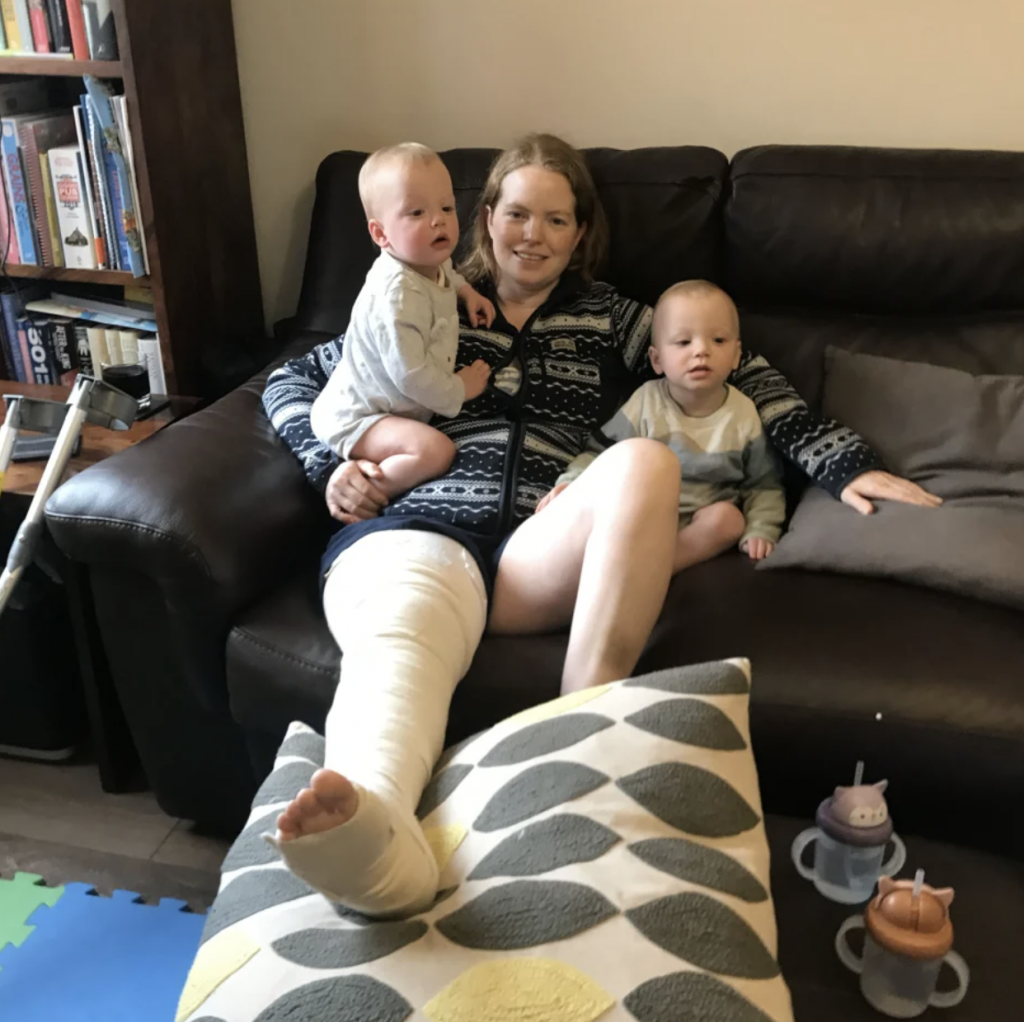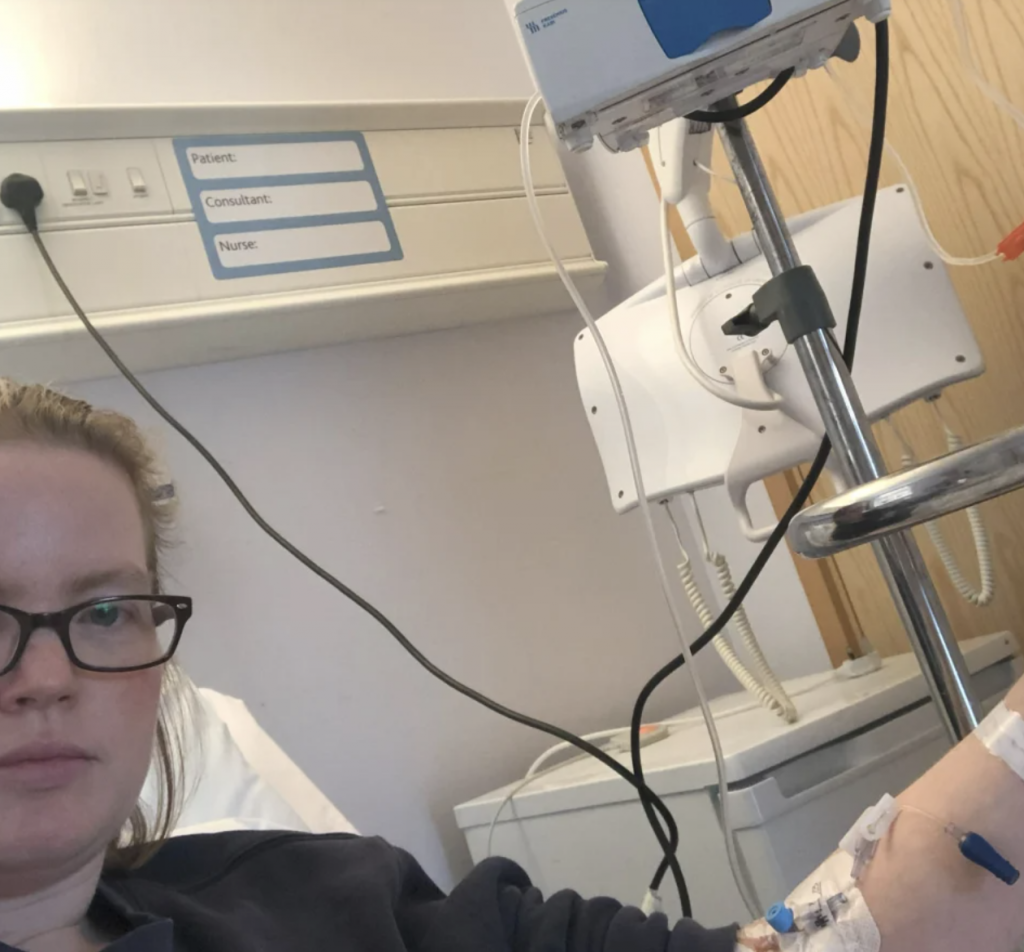Knowing When to Get Your Skin Checked
- 39-year-old Beatrice “Bea” Buckley has survived a rare and aggressive type of melanoma skin cancer, which she initially thought was a verruca wart. But the skin lesion doubled in size, started bleeding and became more easily irritated – luckily, at that point, the mom of twins knew to get it checked.
- Even Bea’s doctor thought it was a verruca, but thankfully, they referred her to a dermatologist to look into it further. Though the dermatologist wasn’t too concerned at first, a biopsy revealed her diagnosis: acral melanoma – and it was stage 3 as it had already spread to a number of lymph nodes.
- According to the Melanoma Research Alliance, acral melanoma, which is sometimes called acral lentiginous melanoma, is “a rare subtype of melanoma that forms on the palms, soles of feet, or under finger or toe nails.”
- If a growth warrants further evaluation, you might get a biopsy. And if advanced melanoma is found, you may need additional imaging and blood tests to help determine the best treatment plan. Don’t delay getting your skin checked — and push for more answers if something that seems suspicious is getting brushed off.
“I thought it was probably a verruca but I’d never had a verruca before, so I went (to the pharmacy) to ask how I could safely treat it in pregnancy,” the freelance communications manager told PA news agency, per Yahoo News UK. “They just said they didn’t think it was a verruca, but not to worry about it if it wasn’t painful and that it would probably just go away on its own. So I suppose I put it to the back of my mind.”
Read More
“It was a real shock,” she said. “It’s terrifying. The word cancer is incredibly scary. When you hear the word cancer, your mind immediately goes to the worst place. You do have thoughts in the middle of the night of your children growing up without a mum, and it’s awful.”
The cancer was stage three and had spread to a number of lymph nodes by the time they found it. Bea underwent three surgeries and targeted therapy, and can now happily say she is in remission.
RELATED: Learning About Side Effects from Targeted Therapy to Treat Late-Stage Melanoma
“For me, I was able to take two tablets twice a day from home, it wasn’t a picnic, I was quite unwell last year, but nevertheless, now six months on from finishing my treatment, I’m here.”

“I don’t have any residual side effects, I am well and I am cancer free,” Bea shared, noting how “grateful” she is to research for “having brought these drugs to the market.”
Understanding Acral Melanoma
According to the Melanoma Research Alliance, acral melanoma, which is sometimes called acral lentiginous melanoma, is “a rare subtype of melanoma that forms on the palms, soles of feet, or under finger or toe nails.”
This form of cancer, which led to iconic reggae singer Bob Marley’s passing, differs from skin melanoma, as it’s not believe to be cause by sun exposure and is often found in areas not normally exposed to UV rays.
Am I at High Risk for Melanoma?
According to research published in the medical journal Neoplasia, acral melanoma “arises on the non-hair bearing skin of the nail bed, palms of the hand and soles of the feet” and is not linked to sun ultraviolet (UV) light like other skin cancers.
This rare subtype of melanoma is more common among people of Black, Hispanic/Latin, and Asian descent, and older adults.
“Acral melanoma is a rare form of melanoma, accounting for only about 1-3% of all cases diagnosed. About 2,000 – 3000 cases of acral melanoma are diagnosed each year in the United States,” the Melanoma Research Alliance explains.
RELATED: Myth Busting: My Fingernails Have Streaks … Do I Have Cancer?
The alliance points out that symptoms can vary, but can include:
- A gray, tan, black or brown spot; or discoloration on the palms of the hands or soles of the feet.
- Any changing spot growing on hands or feet.
- A new or changing mole on the hands or feet.
- Discolorations or dark streaks found vertically across toenail or fingernail beds.
- A spot or patch on the hands or feet that itches, bleeds, or is painful
WATCH: How do you perform a skin check using the ABCDEs?
The Melanoma Workup
It’s important to understand there are regular skin checks for cancer at the dermatologist and also thorough melanoma checks—which are very different.
Unlike other diseases, the workup for melanoma is pretty straightforward. For any skin lesions, your dermatologist will give you a head-to-toe visual examination to look for any other atypical moles or suspicious lesions.
If a growth warrants further evaluation, you might get a biopsy. And if advanced melanoma is found, you may need additional imaging and blood tests to help determine the best treatment plan.
Blood tests may include:
- Complete blood count (CBC): looks at the number and types of cells in your blood, including red blood cells, white blood cells, and platelets
- Comprehensive Metabolic Panel (CMP): measures the blood levels of certain enzymes, proteins, electrolytes, and minerals
- Lactate dehydrogenase (LDH): an enzyme that’s increased in many cancers
Imaging tests may include:
- CT scan: uses x-rays and a computer to create detailed images of your body
- PET scan: uses radioactive materials (called tracers) and a special camera to create pictures of areas inside the body where cancer may be growing
- MRI: Uses radio waves and magnets to create images of organs and tissues
A pathologist may also examine your tissue sample under a microscope to look for certain mutations. This is called biomarker testing, which helps determine the best treatment options for you. The BRAF mutation is the most common mutation found in melanoma tumors.
It’s important to remember that many atypical skin lesions are not cancer. So don’t worry if your doctor finds something that looks a bit strange, it may just be a benign growth. If you have any concerns about the findings, be sure to talk with your doctor.
Turning to Immunotherapy to Treat Melanoma
Immunotherapy helps patients fight melanoma by enabling their own antibodies to attack cancer cells. There are several medications available to patients. Some people may not be candidates for this therapy, and side effects vary from person to person.
“When immunotherapy came on the market, it was such an exciting time for everyone involved in the care of melanoma, the main reason being is it went from this scary unmanageable cancer with no treatments to one that could potentially have a long-lasting result with patients absolutely never having to worry about their melanoma,” Dr. Cecilia Larocca, a dermatologist at Dana Farber Cancer Institute, explained to SurvivorNet.
FDA-Approved Immunotherapy for Melanoma
There are several FDA-approved immunotherapies for melanoma. Each is approved for certain instances of melanoma.
- Tebentafusp-tebn (Kimmtrak)
- Aldesleukin (Proleukin)
- Atezolizumab (Tecentriq)
- Dostarlimab (Jemperli)
- Interferon alfa-2b (Intron A)
- Ipilimumab (Yervoy)
- Nivolumab (Opdivo)
- Peginterferon alfa-2b (Sylatron/PEG-Intron)
- Pembrolizumab (Keytruda)
- Talimogene laherparepvec (Imlygic)
- Imiquimod (Aldara)
WATCH: Turning to Immunotherapy.
Questions to Ask Your Doctor
If you are diagnosed with skin cancer, you may have some questions for your doctor. SurvivorNet suggests some of the following to help you on your cancer journey.
- What type of skin cancer do I have?
- What treatment options exist for my type of melanoma?
- Will this treatment be covered by insurance?
- Would treatment through a clinical trial make sense to me?
- What resources exist to help manage my anxiety because of this diagnosis?
Contributing: SurvivorNet Staff
Learn more about SurvivorNet's rigorous medical review process.

